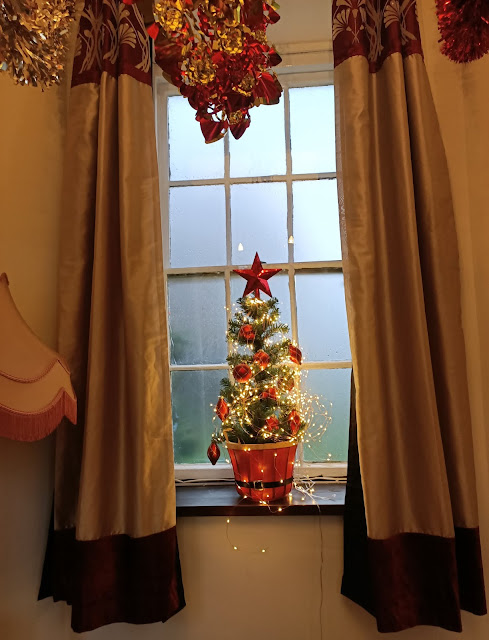The Fascinating History of the Eel Trap
 |
| View towards the dam |
This week has been a busy week, with Nigel gathering quotes
for repair to our Victorian dam, along with other restoration work. It’s a
major undertaking, and as you might expect, finding the right people with the
right expertise is a challenge!
I went down to the dam this morning. The pond is bursting
with water after the recent storms and the surface whipped into choppy waves by
storm force winds. The dam was constructed in the 1860’s, and overseen by
notable Staffordshire architect Robert Griffiths as part of the many
improvements instigated by Thomas Fletcher-Twemlow. It contains the flow of
Tanhouse Brook, creating a picturesque pond ideal for the leisure pursuits of the
well-to-do Victorian family. The cleft of the valley the pond sits in is known
locally as ‘The Dingle’. This wooded valley exemplifies the English bluebell
wood at its best when in full bloom in spring and we enjoy it immensely. In fact, one of the main
objectives of our Heritage Lottery Fund grant is to undertake essential repairs
to the dam in order to maintain this serene setting for future generations.
One fascinating feature of the dam is a round opening
constructed in brick. We’ve covered it with an iron wagon wheel for safety.
Water overflows from the pond down a chute into the round chamber, and then overflows
out back into Tanhouse Brook and through farmland into Betley Mere. The
presence of an eel trap may suggest the pond was used as a stew pond. In the days
before refrigeration stew ponds were used to store living fish for eating,
especially during winter months. Either elvers (young eels) or live adult eels could be kept in the trap until they were needed, the flow of water keeping them fresh. My research uncovered this modern version of an eel trap made from plastic bucket and pipes, so this method is still used.
Eels were a very popular food in Victorian times. Most
people have heard of jellied eels, the traditional street food of the Victorian
era and in the East End of London in particular, still eaten today. The dish is
simple and quick. Chopped eels are simmered in a stock infused with herbs and
spices. This is then cooled and the gelatinous quality of the eel-stock sets the eels in
jelly. It was extremely cheap and nutritious, easily digested, and even
recommended as an aphrodisiac! Sadly, the collapse of the eel population due to the pressures of increased human population makes eels more of a delicacy these days (smoked eel available in Stockport at £75 per kilo!). Another popular Victorian dish
was peas soup and hot eels, sprinkled with hot chilli vinegar. This would be
sold from little handcarts in the street and eaten on the go, ideal for workers
living in cramped conditions with no cooking facilities.
The presence of the eel trap gives us a fascinating insight
into what Thomas Fletcher-Twemlow and his family, and indeed his servants ate,
and how they lived. It’s often the mundane facts of everyday life that bring colour
to history. And we are extremely fortunate to be able to preserve this rather
wonderful brick artefact of yesteryear, thanks to the HLF. Work starts this year - watch this space!
 |
| The sluice |
POST SCRIPT
We’ve announced some dates for our ‘soft launch’ of Betley
Court Gardens. As we do not yet have facilities (toilets, carparking etc) for
visitors, we are inviting just Betley villagers to come and have a look around
as the work starts. We’re hoping folk
will leave their cars at home, and explore by foot. The dates are:
15-16th
June 2019
21-22nd
September 2019
Opening hours to be confirmed.
We’d particularly like to hear any stories locals might have
about Betley Court Gardens. Did you or a
relative work there when it was a hospital? Do you remember sneaking into the
gardens during it’s boarded-up years (1963-76) – promise – we won’t tell! Did
you know any of the staff here, like Head Gardener Percy Mullinor. Were you a
country dancer from Betley School taking part in Professor and Dr Brown’s May
Day celebrations in the 80’s. We’d love to hear from you.





Comments
Post a Comment